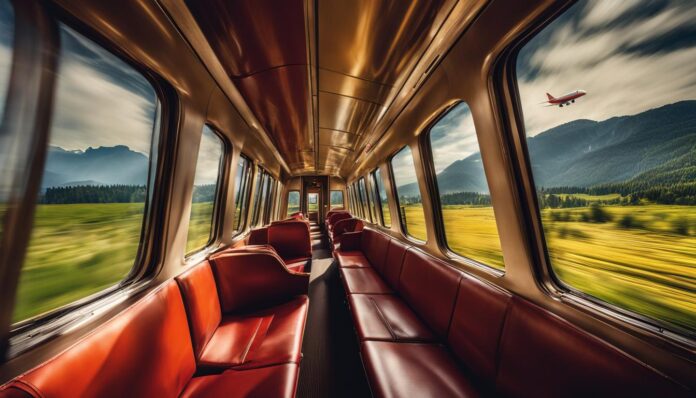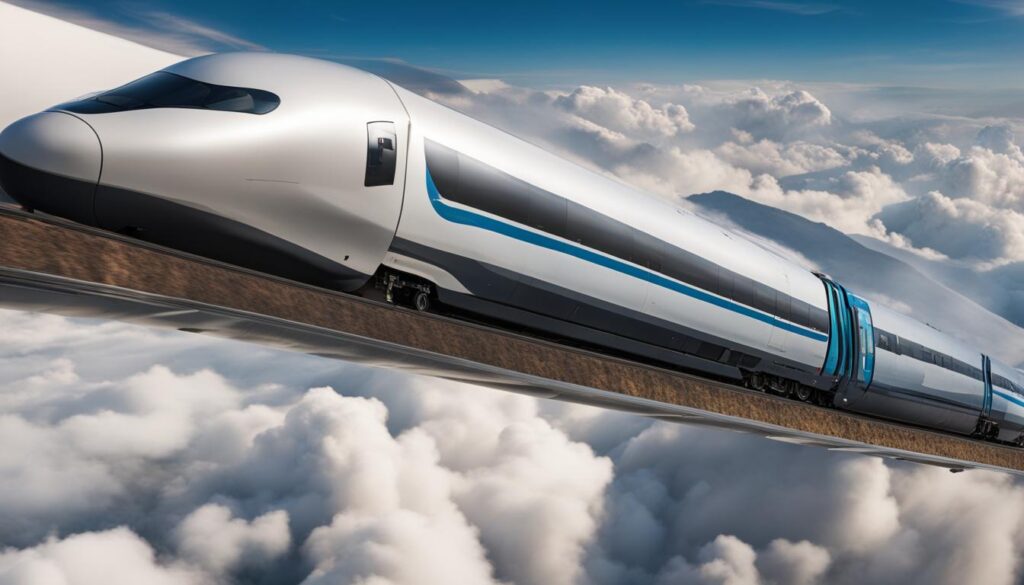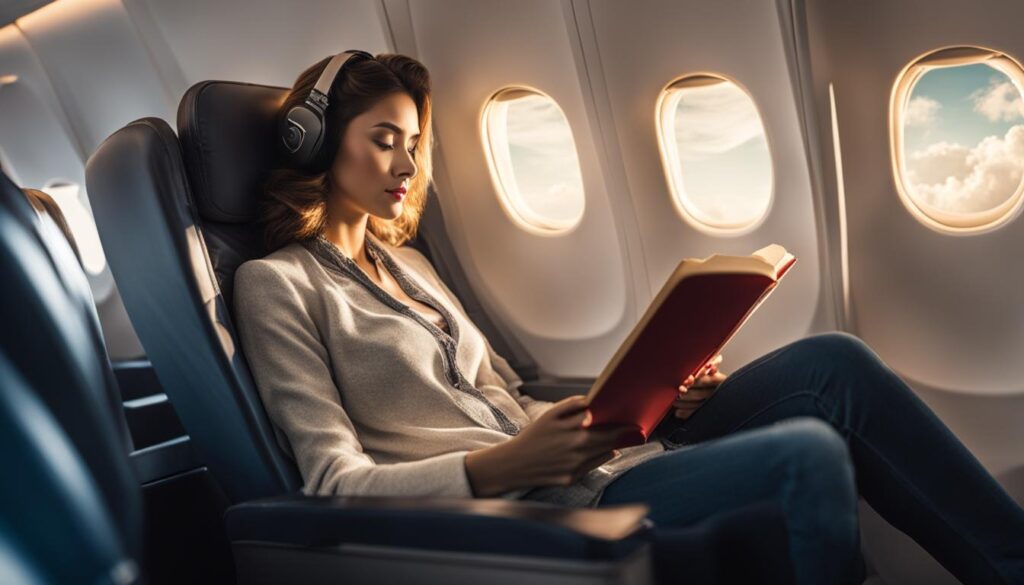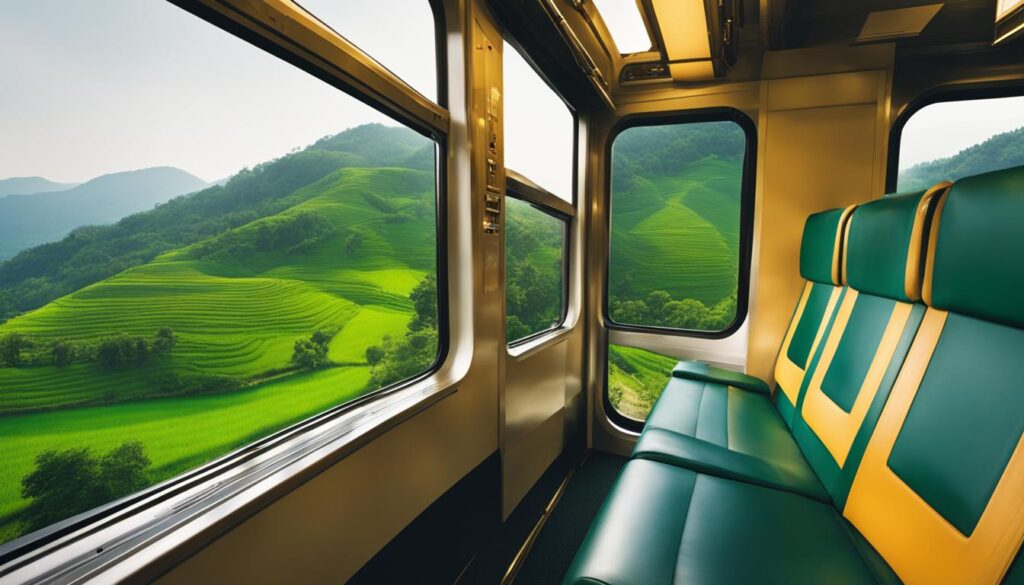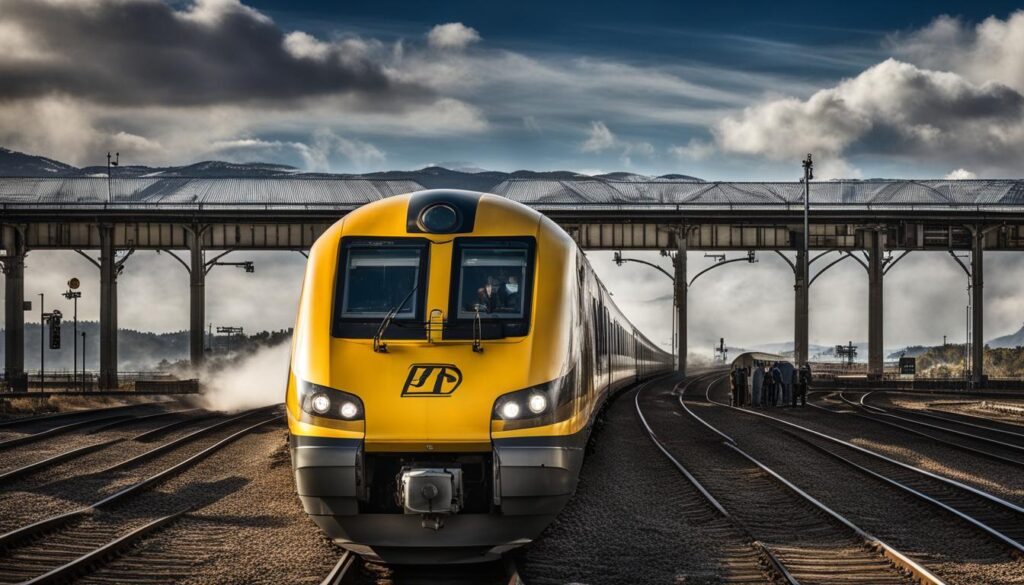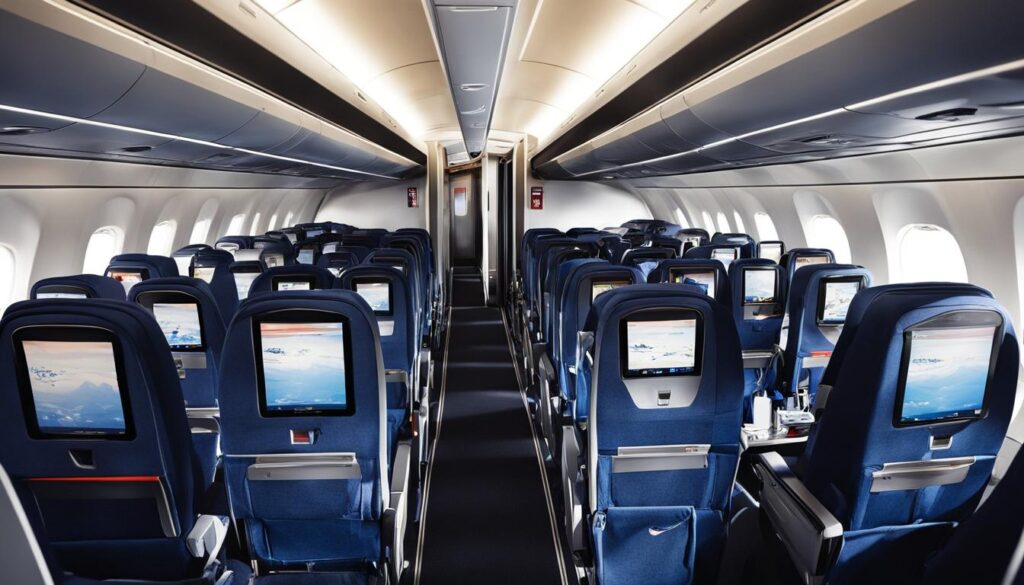When it comes to traveling, deciding on the best mode of transportation can be a difficult decision. You may be weighing the benefits of flying versus train travel. In this article, we will provide a comparison of flying and train travel to help you make an informed decision that’s right for you. We will explore the reviews of flying and train experiences, consider the benefits of both options, and discuss the factors you should consider when choosing between flying and train travel.
Whether you are taking a quick trip or embarking on a long journey, it’s essential to determine the best mode of transportation. This guide provides insights into the benefits and drawbacks of each option. By reviewing the information in this article, you can choose the most convenient and comfortable mode of travel for your needs.
The Pros and Cons of Flying and Train Travel
When deciding between flying and train travel, it’s essential to weigh the pros and cons associated with each mode of transportation. Below, we will discuss the advantages and disadvantages of flying and train travel, helping you make an informed decision for your future travels.
Pros of Flying
Flying offers several benefits, including:
- Speed: Air travel is generally faster than train travel, making it a convenient option when time is a factor.
- Accessibility: Airports are typically located closer to city centers compared to train stations.
- Convenience: Airlines offer a plethora of flights to various destinations, allowing you to schedule your trip at a time that works for you.
However, flying does have its drawbacks, such as:
- Cost: Air travel can be expensive, especially for longer distances.
- Comfort: While airlines offer amenities to improve comfort, such as spacious seating and in-flight entertainment, some travelers may find flying uncomfortable due to factors such as turbulence and the inability to move around freely.
- Environmental Impact: Air travel is a significant contributor to carbon emissions, making it a less environmentally friendly option compared to train travel.
Pros of Train Travel
Train travel also offers various benefits, including:
- Comfort: Train travel provides ample space to move around and relax. Some trains even offer sleeping accommodations.
- Scenic Views: Train travel allows you to enjoy the scenery for an extended period, making for a more personalized and engaging travel experience.
- Environmentally Friendly: Train travel is less harmful to the environment than air travel.
However, train travel also has its disadvantages, such as:
- Speed: Train travel is generally slower than air travel, making it less convenient when time is a factor.
- Accessibility: Train stations may be located further from city centers, making it more challenging to reach certain destinations.
- Schedule: Trains typically run on a set schedule, limiting flexibility when planning trips.
There is no right or wrong choice when deciding between flying and train travel, as it depends on your personal preferences, travel distance, budget, and other factors. Carefully considering the pros and cons of each mode of transportation can help you make an informed decision for your next trip.
Comfort and Convenience of Flying
When it comes to comfort and convenience, flying has a lot to offer. Airlines offer various amenities to make your flight comfortable and enjoyable, such as spacious seating, in-flight entertainment, and meal options. With airlines competing for your business, the options are vast, and you can easily choose which amenities cater to your preferences.
Spacious seating is a significant benefit of flying. Airlines have redesigned their cabins to create more room for passengers, with some airlines providing extra legroom at an additional cost. This is particularly beneficial on longer flights when you want to stretch out and relax.
In-flight entertainment is also a great way to pass the time during a flight. You can enjoy movies, TV shows, music, and games to make your time in the air pass more easily. This amenity is usually free of cost, and airlines offer a broad range of options to cater to your interests.
Another convenience of flying is the availability of meal options. Airlines provide onboard meals, snacks, and beverages, catering to different dietary needs, so you don’t have to worry about packing food for your journey.
Speed and efficiency are also significant benefits of air travel. Unlike train travel, you can fly directly to your destination, with fewer stops and interruptions. This can save you time and also means less hassle for travelers who want a quick and straightforward journey from point A to point B.
The added comfort and convenience of flying make it a great option for travelers who want a stress-free and enjoyable journey. In the next section, we will explore the comfort and convenience of train travel, allowing you to make an informed decision when choosing between the two modes of transportation.
Comfort and Convenience of Train Travel
Train travel offers a unique experience that cannot be replicated by other modes of transportation. One of the main benefits of train travel is the spaciousness of train compartments. Unlike airplanes, where space is limited, trains offer ample room to stretch out and relax during your journey. Additionally, you have more space to store your luggage, which can provide added peace of mind during your trip.
The ability to move around freely is another significant advantage of train travel. You can easily walk up and down the aisles of the train, visit the dining car for a meal or snack, or even step outside to take in the scenery from the observation car. This freedom of movement allows you to stay comfortable and entertained during your travels.
Train travel provides a unique opportunity to enjoy scenic views along the way. You can take in stunning landscapes, travel through charming towns and cities, and experience the beauty of nature up close. Unlike airplanes, where you are limited to viewing the clouds from above, trains offer an immersive journey through the regions you are passing through.
The relaxation and peace of mind that train travel can offer is another benefit. Trains tend to have less turbulence and unpredictable weather conditions than airplanes, which can make for a smoother and more enjoyable journey. In addition, the slower pace of train travel can help you to unwind and destress during your travels, allowing you to arrive at your destination feeling refreshed and rejuvenated.
“I recently took a cross-country train trip and was amazed by how comfortable and relaxing the journey was. I had plenty of space to spread out and enjoyed taking in the scenery along the way. I arrived at my destination feeling refreshed and ready to explore!” – Jane Smith, Train Travel Enthusiast
Speed of Flying vs. Train Travel
When deciding between flying and train travel, speed is often a critical factor. Air transport is typically known for being the fastest way to travel long distances, while train travel is known for its scenic routes and relaxed pace. However, the actual travel time for each mode of transportation can vary greatly depending on various factors.
For instance, the distance between your departure and destination points can impact travel times. While air travel is usually faster for longer journeys, shorter distances may not be worth the time and cost associated with flying. Train travel, on the other hand, may be a better option for shorter distances as it can often be quicker than air travel when factors like airport security checks and baggage claiming are taken into account.
Another factor that can influence travel times is the number of stops and transfers you need to make during your journey. While air travel offers a direct route between two locations, train travel may require multiple stops and transfers, which can extend the overall travel time.
Pro Tip: Book early to get the best prices, and choose non-stop flights to save time when flying. For train travel, consider purchasing tickets in advance and choosing direct routes to minimize your overall travel time.
Flying vs. Train Travel: A Comparison of Travel Times
| Air Travel | Train Travel | |
|---|---|---|
| Short Distance (less than 500 miles) | 1-3 hours (including check-in and security) | 3-7 hours (depending on stops and transfers) |
| Medium Distance (500 to 1500 miles) | 2-5 hours (including check-in and security) | 8-14 hours (depending on stops and transfers) |
| Long Distance (more than 1500 miles) | 4-14 hours (including check-in and security) | 15-24 hours (depending on stops and transfers) |
Overall, when deciding between flying and train travel, it’s essential to consider the travel time, as well as other factors such as cost, comfort, and convenience.
Factors to Consider When Choosing Between Flying and Train Travel
When deciding between flying and train travel, it’s important to take several factors into consideration. We’ve outlined some of the key considerations below to help you make an informed decision:
- Cost: Flying can often be more expensive than taking a train, especially if you book your train ticket in advance. However, you should factor in additional costs such as transportation to and from the airport or train station, baggage fees, and in-flight or onboard meals.
- Distance: If you’re traveling a long distance, flying can save time and be more convenient than taking a train. However, if you’re traveling a shorter distance, a train journey can offer beautiful scenery and a more leisurely way to travel.
- Accessibility: Consider the accessibility of both flying and train travel. If you’re going to a destination that is not serviced by an airport, train travel may be your only option. On the other hand, if you’re traveling to a major city, there may be several flights per day but limited train service.
- Environmental impact: Train travel is often considered a more environmentally friendly option than flying due to lower emissions. If you’re concerned about your carbon footprint, this may be an important consideration for you.
- Personal preferences: Finally, personal preferences should also play a role in your decision. If you prefer the convenience and speed of air travel, flying may be the best option for you. Alternatively, if you enjoy a relaxed journey with scenic views, train travel may be a better choice.
Consider these factors carefully to determine which mode of transportation is the best choice for your needs. Keep in mind that there is no right or wrong answer – the choice ultimately depends on your individual circumstances and travel preferences.
Comparison of Factors
Below is a comparison table of the factors you should consider when choosing between flying and train travel:
| Factor | Flying | Train Travel |
|---|---|---|
| Cost | Higher ticket prices, additional baggage and meal fees | Lower ticket prices, minimal additional fees |
| Distance | Best for long-distance travel, can be faster | Best for shorter distances, offers scenic views |
| Accessibility | Access to major cities and airports, limited small-town service | Less major city access, services small towns |
| Environmental impact | Higher carbon emissions, not eco-friendly | Lower carbon emissions, eco-friendly |
| Personal preferences | Convenience, speed, reliability | Relaxed journey, scenic views |
Flying vs. Train Travel Destinations
Choosing between flying and train travel often comes down to reaching your intended destination. While both modes of transportation have their advantages, the availability and convenience of airports and train stations can be a deciding factor.
When it comes to flying, major airlines typically have a wide network of destinations across the country, making it the go-to choice for long distance travel. In contrast, train travel is often preferred for shorter distances and excursions, especially across scenic routes.
Air Travel Destinations
With numerous airports across the country, many cities and regions are easily accessible by air travel. Some of the most popular flying destinations include:
| Destination | Major Airport(s) |
|---|---|
| New York City | John F. Kennedy International Airport (JFK), LaGuardia Airport (LGA), Newark Liberty International Airport (EWR) |
| Los Angeles | Los Angeles International Airport (LAX) |
| Miami | Miami International Airport (MIA) |
| Chicago | O’Hare International Airport (ORD), Midway International Airport (MDW) |
Train Travel Destinations
While not as vast as the air travel network, train travel has its own set of unique destinations and routes. These can be especially popular among tourists who want to enjoy the scenic beauty of the countryside or explore smaller towns and cities.
Some of the highlights of train travel destinations in the United States include:
- The California Zephyr, running from Chicago to San Francisco through the Rocky Mountains and Sierra Nevada
- The Coast Starlight, running along the west coast from LA to Seattle
- The Empire Builder, taking passengers from Chicago to Seattle or Portland through the northern plains and Rocky Mountains
- The Adirondack, connecting New York City to Montreal with scenic views of the Hudson River Valley and Adirondack Mountains
Whether you’re planning a trip to a major city or an off-the-beaten-path destination, considering the accessibility and convenience of airports and train stations can help you choose the right mode of transportation for your needs.
Reviews of Flying Experiences
When considering air travel, it’s important to hear from fellow travelers about their own experiences. Here are some reviews from recent flights, highlighting various aspects of the flying experience:
| Customer Service | Airline Amenities | Reliability | Overall Satisfaction |
|---|---|---|---|
| “The staff was incredibly helpful and friendly. They really went above and beyond to make sure everyone was comfortable and had what they needed.” | “The seats were comfortable, and they provided a wide range of entertainment options to choose from.” | “My flight was on time and arrived even a few minutes early. I was really impressed with how smoothly everything went.” | “Overall, a great experience. I would definitely fly with this airline again.” |
| “I had some issues with my baggage, but the customer service representatives were able to quickly resolve the problem.” | “The food could have been better, but the flight attendants were attentive and made sure we had enough to drink.” | “My flight was delayed by several hours, which was frustrating. However, the airline kept us updated on the situation and did their best to make up for the delay.” | “Overall, a decent experience. I would consider flying with this airline again.” |
| “The staff was rude and unhelpful. I had a terrible experience dealing with them.” | “The seats were uncomfortable, and there were no entertainment options provided.” | “My flight was cancelled without any explanation or warning. I was left stranded at the airport with no help from the airline.” | “Overall, a terrible experience. I would never fly with this airline again.” |
These reviews show that while flying can offer convenience and efficiency, the quality of your experience can vary greatly depending on the airline you choose.
Reviews of Train Experiences
If you’re considering train travel, it’s important to get an idea of what to expect from past passenger experiences. Reviews of train travel report a wide range of opinions and experiences, so it’s essential to read from a diverse set of sources. Here, we’ve collected and analyzed a sample of train travel reviews to provide you with a comprehensive look at the experience.
Comfort
Passengers generally report that train travel offers comfortable accommodations, particularly on long-haul journeys. One frequent comment is that train compartments offer more space than airline seats, enabling travelers to stretch out and relax. Additionally, many train services provide amenities like food and drink service, electrical outlets, and Wi-Fi, further adding to passengers’ comfort.
Punctuality
Train punctuality can vary depending on a variety of factors, such as the specific route, time of day, and weather conditions. However, many passengers comment that trains are often more punctual and reliable than flights, with frequent reports of trains arriving and departing on schedule.
Onboard Services
Compared to air travel, train journeys often provide more comprehensive and helpful onboard services. In addition to providing food and drink, many trains offer extra amenities like luggage storage, bike racks, and showers. Additionally, train staff members are often more available to answer questions, provide assistance, and address concerns.
Overall Train Journey Experience
The overall feedback on train journeys is typically very positive. Passengers report feeling relaxed, comfortable, and even refreshed after a long train journey. Many comment on the scenic views they experienced during the ride, and some even say that taking the train contributed positively to their overall travel experience.
Comparison of Flying and Train Travel
When choosing between flying and train travel, you need to evaluate the benefits and drawbacks of each option to select the better one for your specific requirements. In this section, we will compare flying and train travel across various aspects, such as cost, comfort, speed, convenience, and environmental impact, to help you make an informed decision.
Cost
Cost is a crucial factor to consider when selecting your mode of travel. While flying may be more expensive, train travel can also be pricey, depending on the route and the type of accommodations you choose. When comparing prices, it’s important to factor in additional costs, such as baggage fees and transportation to/from the airport or train station.
| Flying | Train Travel | |
|---|---|---|
| Price Range | Varies based on destination, season, and airline, but generally more expensive than train travel. | Varies based on route, season, and the type of accommodations, but generally cheaper than flying. |
| Additional Costs | Baggage fees, transportation to/from the airport, in-flight meals and entertainment. | Transportation to/from the train station, upgrade fees for better accommodations, extra charges for amenities. |
Comfort
Comfort is another important consideration when deciding between flying and train travel. While both options can provide comfortable journeys, different aspects can influence your comfort level, such as the seating, legroom, and noise level.
| Flying | Train Travel | |
|---|---|---|
| Seating | Seats can vary depending on the airline and the aircraft’s model. Generally, seats offer adequate legroom but can be narrower than train seats. | Seats have more legroom than plane seats and are generally wider and more spacious. |
| Noise Level | Flights can be noisy, from the sound of the engines to the chatter of fellow passengers. Noise-cancelling headphones can help reduce the noise level. | Trains can also be noisy, and train stations can be bustling. However, train passengers usually have more space to move around and find a quieter spot. |
| Amenities | In-flight entertainment, meals, and beverages are usually available. Some airlines offer upgraded services, such as lounge access, first-class seating, or premium economy. | Trains can have a dining car or a cafe, and some train routes offer sleeping compartments or lounges. |
Speed
The speed of your journey can be influenced by various factors, like the distance you need to travel, the route you take, and the schedules of the airline or train company. Each mode of transportation has its advantages and disadvantages in terms of speed.
| Flying | Train Travel | |
|---|---|---|
| Travel Time | Generally faster than train travel, especially for long distances and intercontinental flights. However, you need to factor in the time spent checking in, going through security, and waiting at the gate before boarding. | Train travel can be slower than flying, especially for long distances. However, you can avoid the hassle of security checks and enjoy the scenery throughout the journey. |
| Punctuality | Flights can be delayed or canceled due to various reasons, like weather conditions, technical issues, or staffing problems. | Trains can also experience delays, but less commonly than flights. However, train schedules can be affected by issues like track maintenance, mechanical faults, or strikes. |
Convenience
The level of convenience varies between flying and train travel, depending on your specific needs and preferences. Factors like accessibility, luggage restrictions, and the ease of boarding can impact your travel experience.
| Flying | Train Travel | |
|---|---|---|
| Accessibility | Most cities have an airport nearby, and many airports offer shuttle services or public transportation to/from the city center. | Train stations can be located in the heart of the city and can often be accessed by public transportation. However, train routes may not be available for every destination. |
| Luggage Restrictions | Most airlines have strict baggage policies, with weight and size limitations. Additional fees may apply for checking in luggage or carrying extra bags. | Train travel usually offers more flexibility with luggage, often allowing you to bring more and larger bags at no extra charge. |
| Boarding Process | The boarding process can be time-consuming and stressful, involving security checks, passport control, and waiting in lines. | The boarding process is generally quick and hassle-free, with no need for security checks or passport control. |
Environmental Impact
The environmental impact of your travel can also be an essential factor to consider, especially if you’re concerned about climate change and reducing your carbon footprint.
| Flying | Train Travel | |
|---|---|---|
| Carbon Emissions | Flights can contribute significantly to greenhouse gas emissions, making air travel less environmentally friendly. Some airlines offer carbon offsetting programs to reduce the impact. | Train travel emits fewer greenhouse gases than flying, making it a more eco-friendly option. However, the use of diesel-powered trains can still have negative effects. |
| Energy Efficiency | Planes have become more energy-efficient over the years, but they still require a significant amount of fuel to operate. | Trains are generally more energy-efficient than airplanes, as they rely on electricity from a grid or renewable sources. |
By carefully comparing the various aspects of flying and train travel, you can make an informed decision that suits your needs best. Take the time to evaluate the cost, comfort, speed, convenience, and environmental impact of each option, and consider what matters most to you. Remember, the best mode of travel is the one that you feel most comfortable and confident using.
Conclusion
After comparing flying and train travel, we hope that you are now able to make an informed decision that best suits your needs. When it comes to speed, flying is the clear winner, but train travel offers a more relaxed and scenic journey.
In terms of comfort and convenience, both options have their advantages, with flying providing more amenities such as in-flight entertainment, while train travel offers spacious compartments and the freedom to move around easily.
Factors such as cost, accessibility, and personal preferences should also be considered when making your decision. Ultimately, it all depends on what your top priorities are for the journey.
We recommend considering all the factors discussed in this article, reading reviews from other travelers, and making a decision based on what matters most to you.
Our Recommendation:
| Flying | Train Travel | |
|---|---|---|
| Speed | Fast | Slower |
| Comfort | Spacious seating, in-flight entertainment, and meal options | Spacious compartments, freedom to move around, and scenic views |
| Convenience | Many airports, frequent flights, and accessible routes | Relaxed boarding, ability to bring more luggage, and fewer restrictions |
| Cost | Usually more expensive, especially for long distances | Often cheaper, especially for shorter distances |
| Environmental Impact | Produces more carbon emissions | Lower carbon footprint |
Ultimately, the decision between flying and train travel comes down to your priorities and the specifics of your trip. We hope that our comparison of flying vs. train travel reviews and experiences has been helpful in making an informed decision.
Conclusion
When it comes to choosing between flying and train travel, there are several factors to consider. It’s important to evaluate your personal preferences, travel requirements, and budgetary constraints to make an informed decision.
After comparing the pros and cons of flying and train travel, as well as exploring the reviews of experiences shared by fellow travelers, you should have a better understanding of which mode of transportation is the best choice for your needs.
Whether you prioritize speed and efficiency or comfort and relaxation, both flying and train travel offer unique benefits. By taking the time to carefully evaluate your options, you can plan a successful and enjoyable journey that meets all of your travel needs.




























